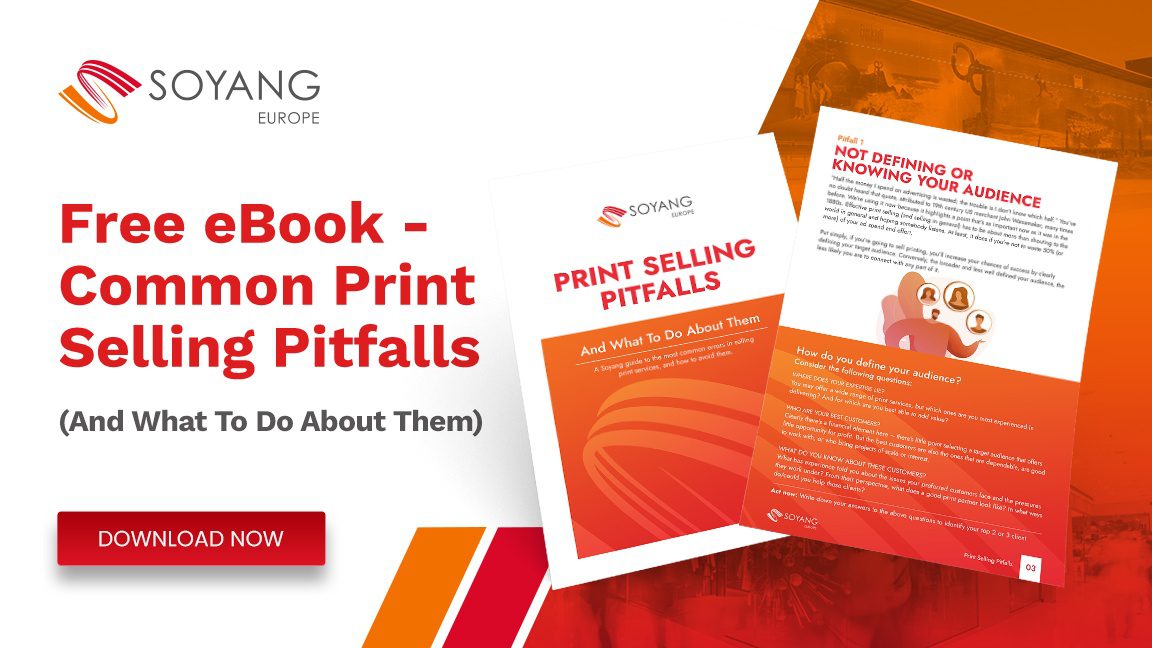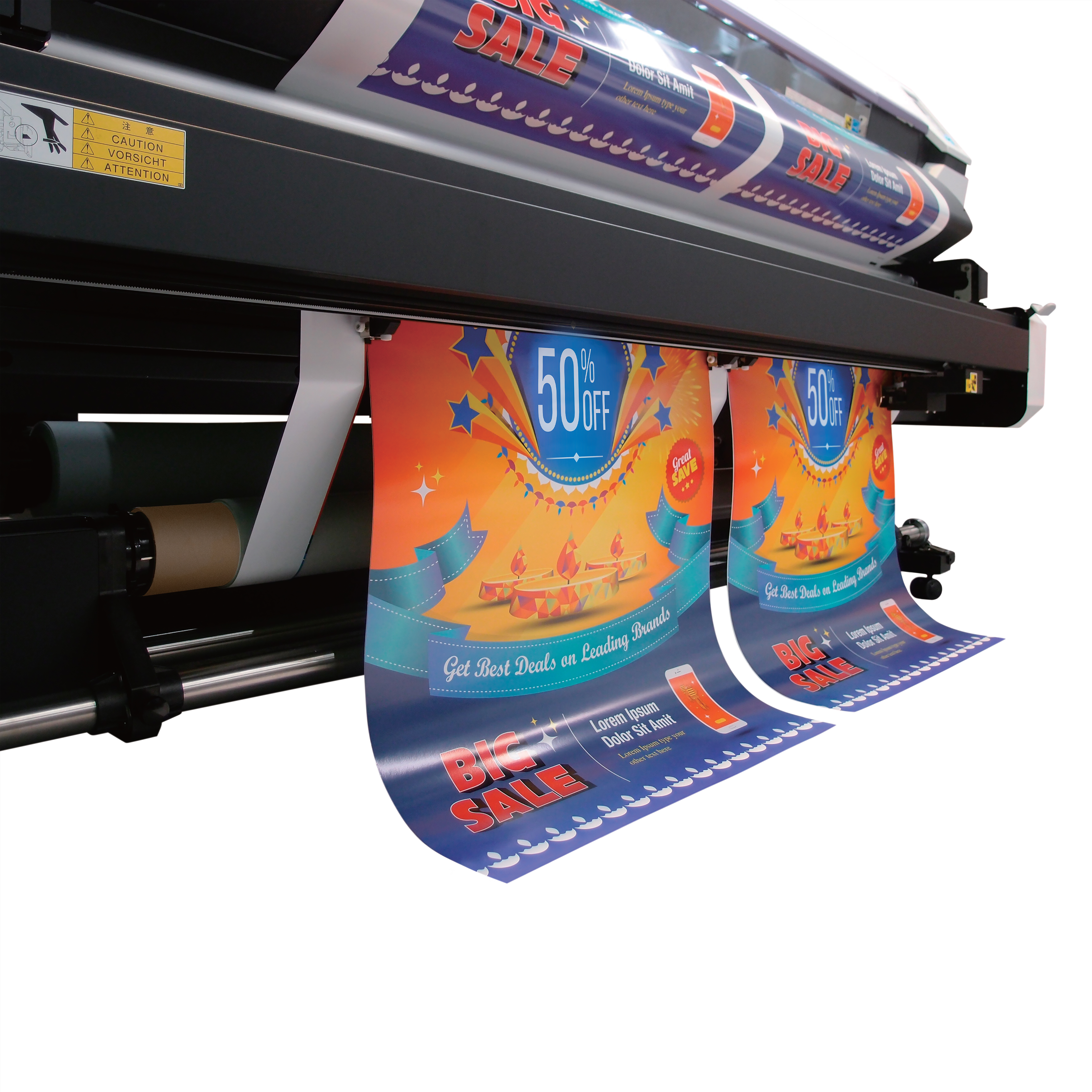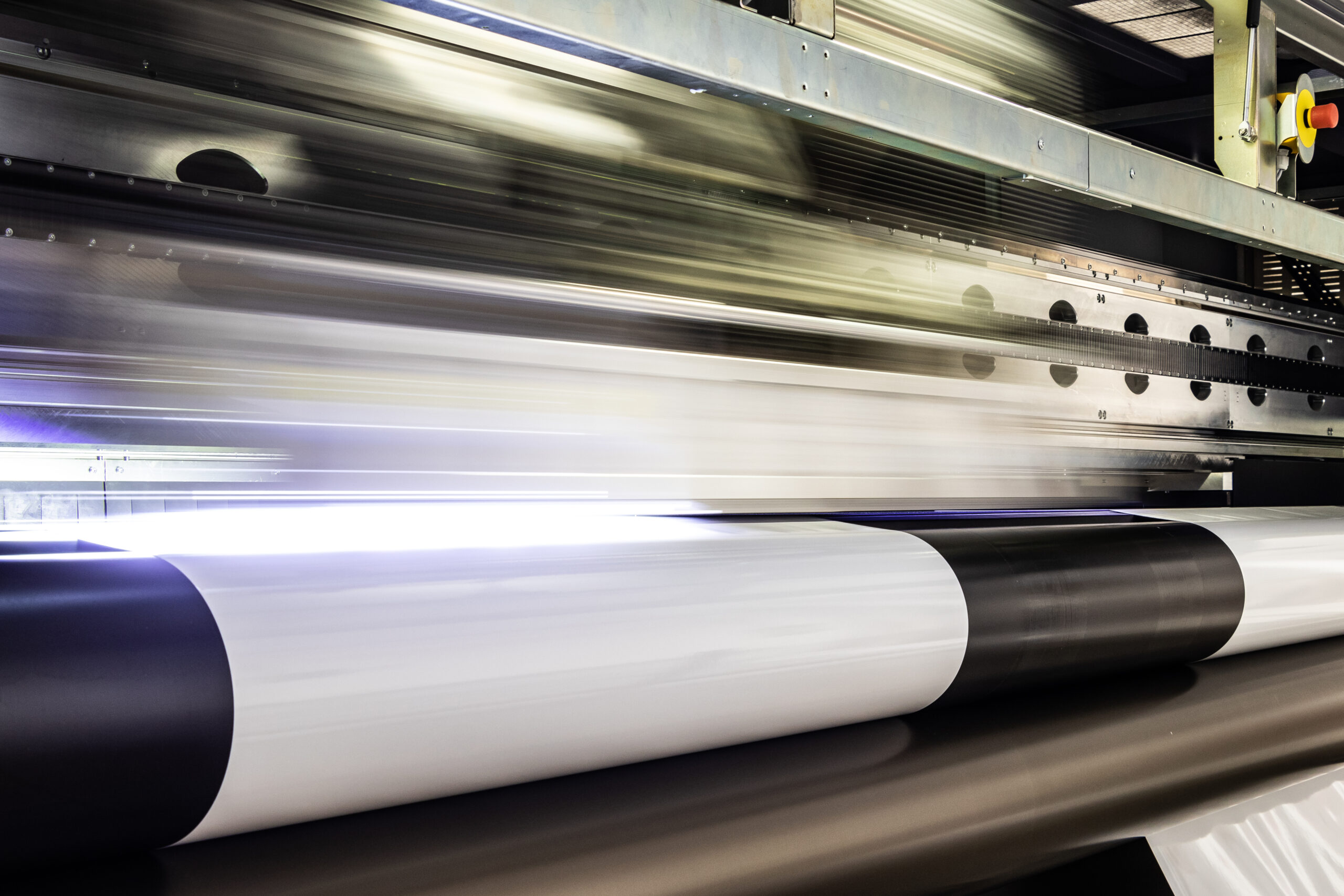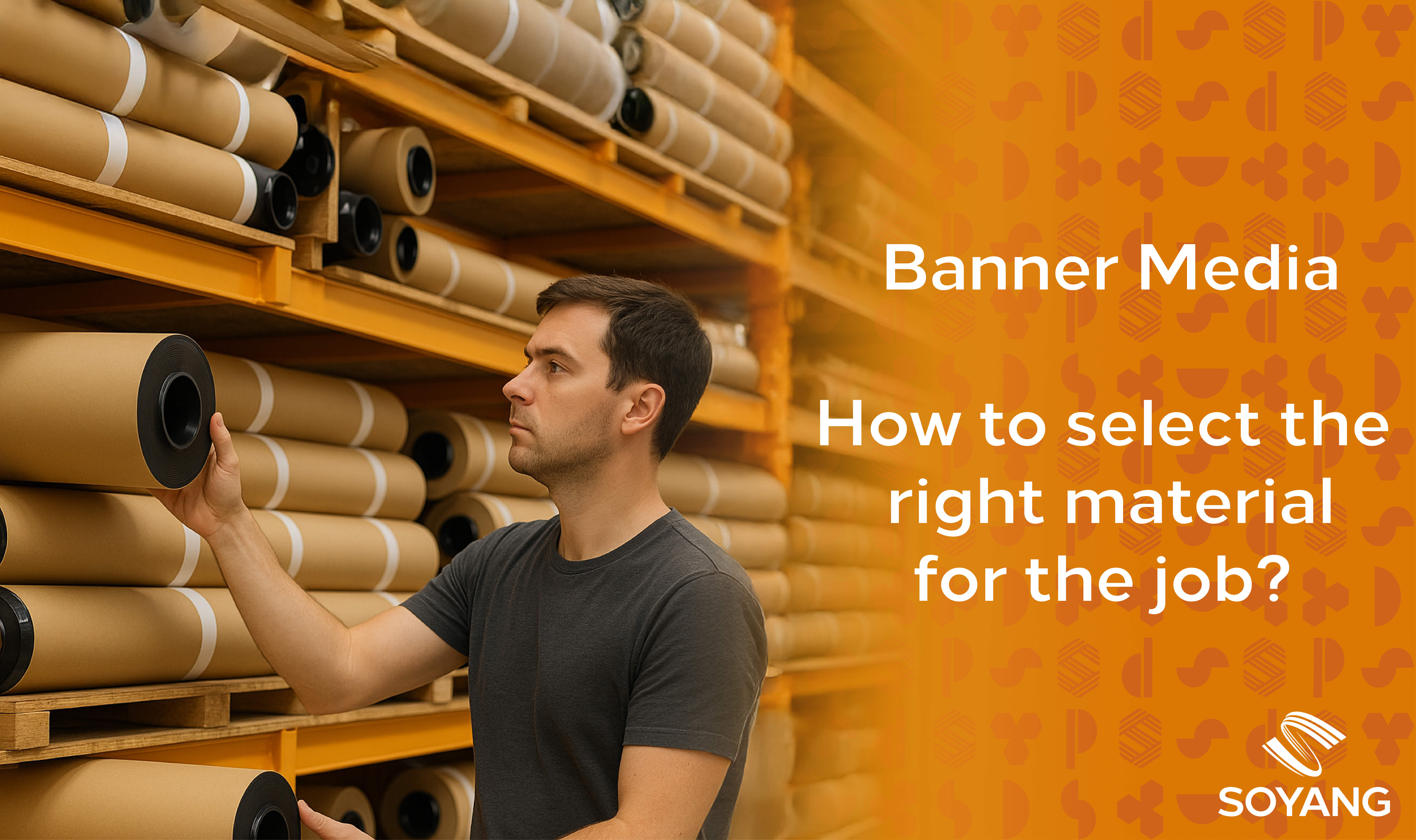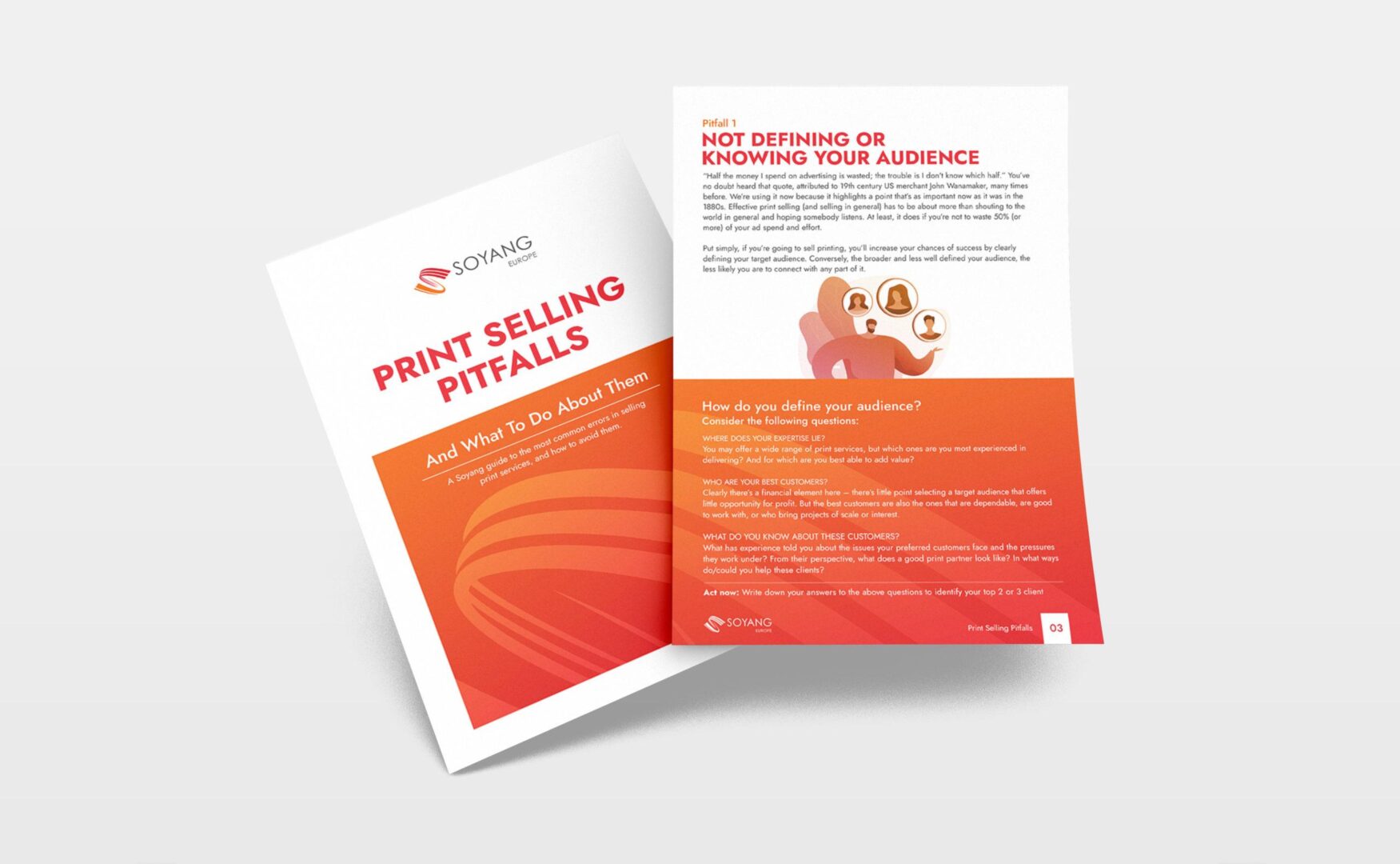There’s more to banner printing than the image and messaging it contains. Just as important is ensuring you’ll be able to display your banner powerfully and durably. That’s why the right choice of banner finishing options matters.
What is banner finishing?
The power of a banner isn’t just about the material it’s printed on it. For a banner to be effective, it needs to be able to do its job in the environment in which you place it.
A vinyl banner needs to be securely fixed to railings or hoardings, because a banner that flaps or rips won’t create a great impression and may quickly cease to be legible at all. You may need to add wind flaps or slits to ensure you minimise stress.
A flag banner will need to fit over a pole or mast, and if you’re hanging your banner from a ceiling, you may need to add a dowel or two to ensure there’s no sagging when the banner is suspended.
All of the above are examples of banner finishing. Choosing the right finish for your banner is crucial to ensuring you deliver the impact you intended.

Banner finishing options
Your options effectively fall into four categories:
- Grommets
- Hemming
- Wind slits and flaps
We’ll cover hemming on banners in more detail below as it’s the element that presents the greatest number of options, so let’s box off those other options now:
Grommets
Grommets or eyelets are the reinforced holes through which the ropes, ties or other fixings will pass to secure your banner. Eyelets are available in a range of sizes and it’s important to ensure that if you’re planning to secure using a chunkier fixing such as a carabiner, the grommet is large enough to accommodate it.
As a minimum, each corner of the banner will include a grommet. Larger banners may require additional grommets spaced at 12 or 24-inch intervals.
You can specify your preferred colour of grommet (silver, gold and black are the most common options). Where no preference is specified, we’ll usually choose the option that best suits the design.
Wind slits or flaps
You won’t need these with every different banner type.
A flag is designed to flap in the wind so you actively want it to catch the breeze. A mesh banner which, by its nature includes thousands of tiny holes as part of its construction, will allow wind gusts to pass right through. But a vinyl banner can effectively function as a sail. In gusty conditions that can place undue stress not just on the banner and eyelets but on the structure to which the banner is fixed.
Adding slits or flaps as one of your banner finishing options can ensure the wind can escape, reducing stress forces but also ensuring that the banner remains legible (rather than billowing and contorting) in stormy conditions.
Other banner finishing options
Other finishing options include:
- Kedar or sail track edging, a rigid banner finish that can work well on large outdoor installations such as billboards
- Rods or dowels to enable banners to hang without sagging
- Bungees, ropes & carabiners to ensure a secure fixing for your banner

Banner hemming
Not every piece of print needs a hem. For indoor use, where a banner is, for example, suspended within or over a frame, you may be able to print hem-free and avoid any (slightly) intrusive eyelets, stitching and similar. In such instances your design can be printed right to the material’s edge, as there’ll be nothing to obstruct the design.
In most cases, however, a banner needs suspending on ropes, poles, cables or similar. Without the additional strength of a hem, you’d risk the weather taking its toll on the fixings. Gradually the banner would tear itself free.
Hemming your banner ensures your print can enjoy extended outdoor use.
What is banner hemming?
Hemming on a banner is much the same as hemming on your shirt or jeans. By folding over a small amount of excess fabric/vinyl and stitching or sticking it onto itself, you create a tough, durable edge to your banner that inhibits tearing or unravelling.
Where the banner will be placed on a mast or pole or have dowels run through it, the hem will be fixed in a way that leaves a pocket larger enough for the rod or pole to pass through it.
Although the basics of hemming are the same across materials, in banner-making there are several alternative ways of fixing the hem in place:
- Glue or tape are the simplest options but neither is the first choice for banners that will face the rigours of the weather. Although fine for indoor and low attrition uses, glue and tape may not offer the strength needed for heavy vinyls and/or outdoor use. In other applications, however, they create an invisible hem free from the tucks and ripples that may be inevitable on a stitched hem.
- Stitching the hemming on a banner creates a strong finish. As noted above, however, a stitched edge may lead to compromise in the design (that is, smaller printed dimensions) to avoid stitch lines invading your imagery. A pulled stitch can cause the banner to bunch and may be difficult to resolve.
- Heat welding creates an incredibly strong hem on a vinyl banner which brings all the advantages of the above two options and none of the disadvantages. The heat-pressed hem ensures a strong yet fully usable banner surface, giving your banner a longer lifespan that reduces the cost of repairs and reprints.
When should you consider banner finishing?
Despite the name, the time to consider your banner finishing options is the same time as you determine the design, dimensions and materials. The choice of finish can influence the size of the printable surface and the positioning of information and imagery, so in addition to thinking about what you place on the banner, you’ll also need to consider the following:
- Where your banner will be positioned
- How long it will stay in place
- How it will be fixed in place
- What conditions it will (probably) need to weather
Once you have that information, talk to us about your banner – and banner finishing options – that will ensure your messaging stays strong, bold and vibrant for as long as you need it.
